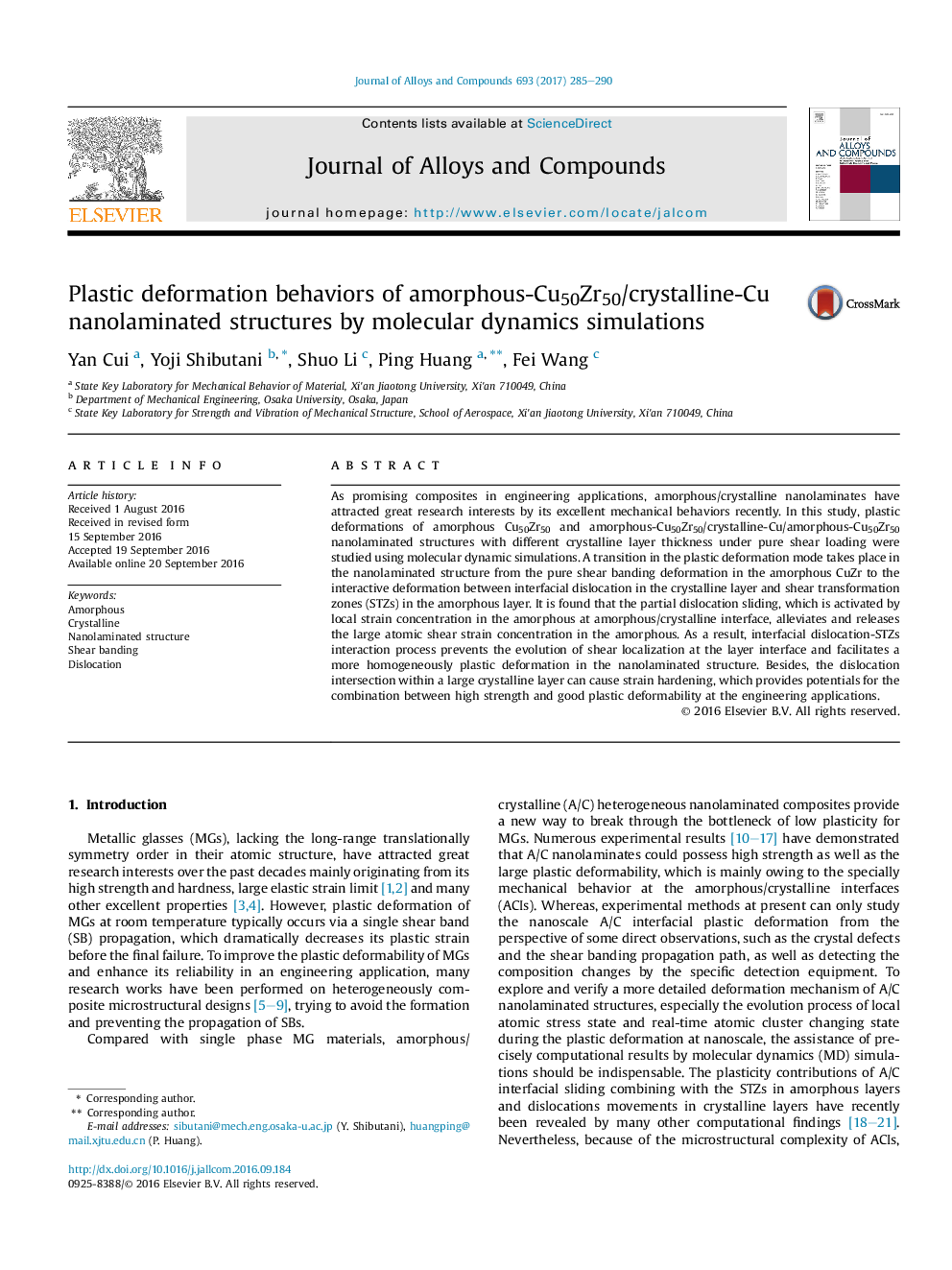| Article ID | Journal | Published Year | Pages | File Type |
|---|---|---|---|---|
| 5461008 | Journal of Alloys and Compounds | 2017 | 6 Pages |
Abstract
As promising composites in engineering applications, amorphous/crystalline nanolaminates have attracted great research interests by its excellent mechanical behaviors recently. In this study, plastic deformations of amorphous Cu50Zr50 and amorphous-Cu50Zr50/crystalline-Cu/amorphous-Cu50Zr50 nanolaminated structures with different crystalline layer thickness under pure shear loading were studied using molecular dynamic simulations. A transition in the plastic deformation mode takes place in the nanolaminated structure from the pure shear banding deformation in the amorphous CuZr to the interactive deformation between interfacial dislocation in the crystalline layer and shear transformation zones (STZs) in the amorphous layer. It is found that the partial dislocation sliding, which is activated by local strain concentration in the amorphous at amorphous/crystalline interface, alleviates and releases the large atomic shear strain concentration in the amorphous. As a result, interfacial dislocation-STZs interaction process prevents the evolution of shear localization at the layer interface and facilitates a more homogeneously plastic deformation in the nanolaminated structure. Besides, the dislocation intersection within a large crystalline layer can cause strain hardening, which provides potentials for the combination between high strength and good plastic deformability at the engineering applications.
Related Topics
Physical Sciences and Engineering
Materials Science
Metals and Alloys
Authors
Yan Cui, Yoji Shibutani, Shuo Li, Ping Huang, Fei Wang,
